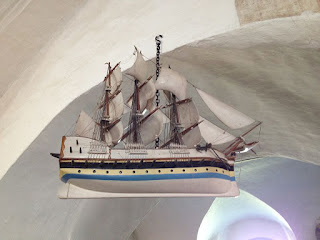Tomorrow is Advent Sunday! I commissioned this stole from Paula-Marie at
Bespoke Stoles. Isn't it lovely?
This year I have the opportunity to tell Godly Play® reflective stories at a small after-school club we are trialling for primary school children.
We don't meet every week, so I started already last week telling the first two parts of the Advent lesson. And then I tried asking some Wondering questions, although they are not usually part of this lesson. I structured them around the Sacred Story questions, asking:
I wonder what part of getting ready for Christmas you like best?
I wonder what part of getting ready for Christmas you think is most important?
I wonder if there's any part of getting ready for Christmas that we could leave out, and still be ready?
What I hadn't expected is that the children would hear the second and third questions as ones that had "right" answers. Upon reflection, I should have anticipated this. I was there as a priest, wearing my clerical collar. They don't know me well, and are unfamiliar with Godly Play.
So which parts of getting ready for Christmas did they tell me were most important? Praying, and going to church. Maybe those were their true thoughts, but I suspect they said this trying to please me. Nonetheless, I stuck to my training and mused on each answer as a genuine contribution, repeating it, or giving a nod and a Hmm.
Even then, I didn't spot that my third question would suggest to them that I believed we should sacrifice the "secular" elements of Christmas in favour of more "important" ones. So I went ahead and asked, I wonder if there's any part of getting ready for Christmas that we could leave out, and still be ready? A child who'd earlier said the best part was presents now said we could leave them out. I was so genuinely shocked that I blurted out, But that's the part you like best! So another child came to our rescue and suggested that if we did leave out the presents, that would be like leaving out the Wise Men. What a brilliant answer - attempting to bridge the apparent divide between churchy priest and present-loving child.
I need to think hard about how I will help them to wonder next time.


 It had elements in common with a team-building day my university department once participated in. And it had elements of Godly Play, of course.
It had elements in common with a team-building day my university department once participated in. And it had elements of Godly Play, of course.